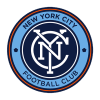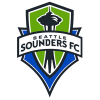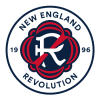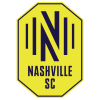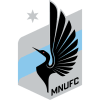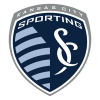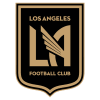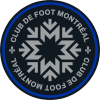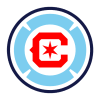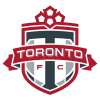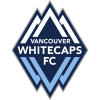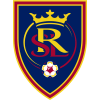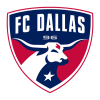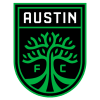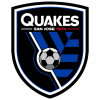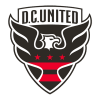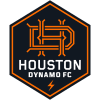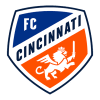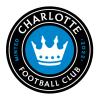As is now tradition, I'm starting the year with a tip of the cap to the great Zach Lowe for the inspiration, courtesy of his Annual Tiers of the NBA opus, to write this piece. What follows are not hard-and-fast Power Rankings, per se, but rather something a little looser in terms of talent level, cohesion, chemistry and all the et ceteras that make teams tick (or not).
These teams are mostly in the order I think they'll finish, but what really matters is the tier designation.
If the underlying numbers think you’re dominant all year, and then you win MLS Cup, and then bring back eight of 11 starters (and, let’s face it, benefit from the departure of Jesus Medina) from that group, keep last year’s Golden Boot presented by Audi winner in spite of some eight-figure offers from globally renowned clubs, and then cruise into the quarterfinals of your CCL campaign by establishing a six-goal aggregate final over Costa Rica's Santos de Guápiles, you get to be the first team mentioned here. That’s the rule.
The Pigeons were superb for basically all of last season. They created the most expected goals in transition and in regular build-up from open play, as per Second Spectrum’s attacking data, and were among the five stingiest defenses in both those phases as well. They were a monstrous pressing team, and they were not easily pressed themselves. They were also a dominant team on attacking set pieces, as they showed throughout the playoffs, into and including MLS Cup itself.
With Taty Castellanos still in town, there is no reason to think any of that changes. The numbers certainly seem to suggest another strong year is incoming:
My Worry
Taty will probably go this summer, right? If he does, that opens the door for Héber to return, and while I’m a big Héber guy, there’s no guarantee he can replicate his 2019 season. Meanwhile, there’s no guarantee that any of the trio of expensive, young, South American attackers imported last season are ready to give more than just spot minutes – yet one of them has to start scoring goals from the wing on a semi-regular basis, or this team won’t reach its potential.
There is also reason to be concerned about Maxi Moralez’s fight against Father Time, and Tayvon Gray’s ability to consistently add attacking value on the overlap (NYCFC’s fullbacks spend A LOT of time as attackers). And replacing James Sands at d-mid won’t be easy.
Even if everything in the preceding two paragraphs plays out for the worst, I still think this is a solid playoff team. But there’s a pretty big gap between “solid playoff team” and the expectations that NYCFC are dealing with heading into this season.
First-Choice XI
4-3-3: Johnson; Amundsen, Callens, Chanot, Gray; Parks, Morales, Moralez; Rodriguez, Taty, Magno
On paper, the Sounders appear deeper, more solid and more loaded with veteran know-how than they ever have before, which is saying something for a team that’s been a model of high-level consistency since their arrival in MLS 13 years ago. But that’s also what you get when you’re able to sign MLS veterans from elsewhere on the cheap (Kelyn Rowe, last year) or not-so-cheap (Albert Rusnak, this year), while developing draft picks (the Roldans) and, now, Homegrowns (a whole bunch). Plus they generally don’t miss on their big imports – Nico Lodeiro, Raúl Ruidíaz, João Paulo, Yéimar Gomez Andrade, and even Xavier Arreaga are all, now, foundational pieces.
Even without the Rusnak signing, I think they’d have been a Tier 1 team. They stayed here last year, after all, during a season in which they basically played without Lodeiro or Jordan Morris and in which Stef Frei was hurt for about half the year to boot. Now those guys are all back and healthy, and they have a full year's worth of experience playing a 3-5-2 (sometimes a 3-4-2-1).
Full disclosure: I’m picking them to win the Supporters’ Shield.
My Worry
I think their chemistry will be good – it basically always has been under Brian Schmetzer – but suddenly this team might have too many guys for not enough minutes? That can, if not precisely ruin a locker room, at the very least it can make it uncomfortable in a “2021 LAFC” kind of way, and that stuff matters.
I also kind of suspect they’re going to struggle to figure out who goes where when transition opportunities arise. Seattle’s secret sauce over the past half-decade has been complete clarity in those moments, but things might not work like that with Rusnak and Lodeiro sharing the field.
First-Choice XI
4-2-3-1: Frei; Nouhou, Arreaga, Yeimar, A. Roldan; Joao Paulo, C. Roldan; Morris, Lodeiro, Rusnak; Ruidiaz
By the numbers – the points accumulated being the big one – this is the best regular-season team in league history, and they lost just one significant contributor from last year (Tajon Buchanan). They then went out and replaced him with a high-level MLS veteran who’s played the best soccer of his career under Bruce Arena (Sebastian Lletget), beefed up their reserves in defense and added a potential game-breaking attacking sub in Jozy Altidore.
They return good players basically everywhere and match-winners everywhere from the front line to goalkeeper, at least for now. And one thing Arena’s excelled at over the years is getting his team to maintain a good level for multiple seasons in a row.
There will be a drop-off, of course – the Revs aren’t posting 73 points again, and I would be genuinely surprised if they were truly in the Supporters’ Shield hunt.
But it’d be even more surprising if they didn’t make a serious CCL, or MLS Cup or even US Open Cup run. This team’s built to win right now, and Bruce has almost always done his best work in knockout tournaments.
My Worry
Two things can be true: The Revs were a truly great team last year, utterly deserving of their Shield victory. And they were not actually as good as their record.
Arena said as much after the home playoff loss to NYCFC that ended their season. The underlying numbers said as much, as well – New England gave up more than 13.5 shots per game, which was seventh-worst in MLS. They were good at limiting shot quality, and so their xG allowed was middle of the pack, but teams with middle-of-the-pack defensive numbers don’t tend to win things.
The issue, IMO, wasn’t individual quality but rather team structure. The Revs gave up a ton of the ball in central midfield, often asking Matt Polster to do the job of two or three players all by himself, and that’s how NYCFC got the best of them in the Audi 2021 MLS Cup Playoffs. It’s also how Columbus got the best of them in the 2020 playoffs, and is an issue Arena’s teams have struggled with going back at least to the 2006 USMNT World Cup loss to Ghana.
There was enough individual quality on hand to mitigate that last year. But with Buchanan gone, Matt Turner soon to follow and maybe Adam Buksa third out the door, this group doesn’t seem as capable of defying the advanced metrics in 2022.
They have to get numerical superiority in central midfield more often against the best teams.
First-Choice XI
4-4-2 diamond: Turner; Jones, Kessler, Farrell, Bye; Lletget, Polster, Gil, McNamara; Buksa, Bou
Time and again they’ve taken a step forward under Jim Curtin, and after winning the Shield in 2020 the natural next step forward obviously had to come in the playoffs. And so they complied, making a run all the way to the Eastern Conference Final before their Covid-ravaged squad just couldn’t push through the absence of seven starters and beat NYCFC.
But that wasn’t all: Philly also made it to the CCL semifinals, giving Club America a good bit of hell in the process before some profligate finishing saw them bow out. It would’ve been a very credible season even without that, but with two deep runs like that – one continental, the other in the postseason – and almost everyone coming back, it’s pretty clear that Philly’s a top-tier group.
There are two other obvious reasons to be enthusiastic. One is that by the nature of Philly’s approach to team-building (play the kids), basically 80% of the roster is always on the, “they should be even better this year” growth curve. Two is that after this happened in the playoffs…
Philly’s ownership really did go out and get Jim Curtin two new DP forwards in Mikael Uhre and Julian Carranza. Between those two and Daniel Gazdag having half a year under his belt to acclimate himself, it feels like a pretty good bet that the Union won’t fall short so often in the 18 this season.
(Also, you might want to scroll down to the RSL section for a very encouraging data viz.)
My Worry
What if that feeling’s wrong? Gazdag really didn’t impress last year, and while Paxten Aaronson is clearly very good, he’s still just an 18-year-old prospect with three career goals.
As for those DP forwards, they’re not exactly sure things, are they? Uhre is a 27-year-old who’s never scored more than 14 in a season (Kacper Przybylko’s done that!) and has never played outside of Denmark, while Carranza’s got three goals in two years in MLS.
So Philly are once again betting big on Ernst Tanner’s eye for talent and their ability to get players to improve. While they always do that, it doesn’t always work out – if it did, they wouldn’t have been shopping for new forwards this winter in the first place.
First-Choice XI
4-4-2 diamond: Blake; Wagner, Elliott, Glesnes, Mbaizo; Flach, Martinez, Gazdag, Bedoya; Uhre, Carranza
Even at around 60% last year, Josef Martinez was still one of the league’s best center forwards, potting 12 goals in about 1650 minutes. He’s now going to play the entire year for a coach he clearly likes, and who clearly wants to get his team to spend as much time attacking in transition as possible, which is very different from the prior two managers.
On top of that, they finally ended the Boat Show. Ezequiel Barco is a super-talented individual player, but “individual” does a lot of work there, and my god was he a transition killer. If his replacement, Thiago Almada, is just league average in that phase of the game – and some anon rando wrote a bajillion words asserting that he’s at least that – then Atlanta should be able to brute force a bunch of wins based on pure talent.
Beyond a healthier Josef and any kind of upgrade on what they got out of Barco’s DP slot, I just think Atlanta will be better based upon familiarity and pragmatism. Marcelino Moreno, Santi Sosa, Alan Franco and Luiz Araújo have all been there a bit, and Gonzalo Pineda comes from the “First Do No Harm” school of managerial approach.
When you have a roster like Atlanta’s, that’s probably the right way to go.
My Worry
Players at Josef’s age tend not to get more fit. Just ask his backup, the newly arrived Dom Dwyer.
That is my single biggest concern, though I also think it’s fair to fret about the “3” line of Pineda’s 4-2-3-1. None of Almada, Moreno or Araujo naturally stretch the field – they’re all “come back to the ball” guys. While that’s admirable, it’s also a way to turn a super-talented team that should be dominant in the open field into a slow, soul-sucking mess.
First-Choice XI
4-2-3-1: Guzan; Gutman, Franco, Robinson, Lennon; Alonso, Sosa; Moreno, Almada, Araujo; Josef
The Coyotes checked most of the boxes they wanted to check in Year 2, with the biggest being Hany Mukhtar’s evolution into an MVP candidate, as well as the defense’s evolution into the league’s stingiest unit from open play as per the tracking data.
Both of the above were helped by the fact that Gary Smith eventually switched to a 3-4-1-2 (that often turned into a 3-4-2-1) in the middle of the season. That allowed Mukhtar more freedom to spend time hunting goals and assists as a true attacker rather than sitting deeper as a midfield orchestrator, while also allowing Smith to get a third center back – young Jack Maher, who showed very well and seems primed for a big step forward in Year 3 – in there alongside veterans Dave Romney and, of course Walker Zimmerman.
All those guys are back, as are the veteran central midfielders, the veteran left back, the veteran ‘keeper and a long center forward depth chart. On top of that, they went out and made one of the biggest free-agent signings in league history by snagging RBNY captain Sean Davis, juicing the depth chart at the most important spot on the field.
My Worry
Mukhtar massively overperformed his underlying numbers last year, and unless Ake Loba hits, I don’t know if there’s enough goalscoring in this roster to float the attack if Hany regresses to the mean. CJ Sapong did it for a bit last year, but CJ's solidly into his mid-30s now and is one of the streakiest goalscorers in MLS history.
We saw that last year: From mid-April to late June he scored once in 10 appearances; from early July to mid-September he scored nine times in 14 appearances. And then in the season’s final 11 games, including the playoffs, he only scored twice more. Ooof.
The other looming issue is one I just still can't wrap my head around:
Nashville just stink at defending set pieces. For a team that fields three aerially dominant center backs, it’s inexplicable.
First-Choice XI
3-4-2-1: Willis; Romney, Zimmerman, Maher; Lovitz, Godoy, McCarty, Muyl; Leal, Mukhtar; Loba
For three years now I have banged on and on about how it’s impossible for the Rapids to be so consistently dominant on restarts – especially corners – and for three years now they’ve made me look like a jerk, so I’m just going to accept that they’re maybe the most dominant team in league history on attacking set pieces, and take it from there. Because that’s a hell of a good foundation to build upon.
Their dominance in that phase of the game obscured how good the Rapids were when the ball was in play. They finished fifth last season in xG created from open play as per Second Spectrum and were ninth defensively in xG conceded. If you are that good on both sides of the ball, and historically great on set pieces, you can do things like collect 1.8 ppg and top the Western Conference regular-season standings.
There has been some offseason surgery, with Kellyn Acosta sold to LAFC for a bucket full of GAM, Cole Bassett loaned to Feyenoord for 18 months and Dom Badji, whose late-season goalscoring jag played a huge role in pushing Colorado to the top of the West, off to Cincinnati in free agency. Austin Trusty will follow them out the door this summer as he will join English Premier League side Arsenal via transfer.
But most of the personnel is still there, and because head coach Robin Fraser is still there, the underlying structure and flexibility (they can toggle between a 3-4-2-1, a 4-3-3 and a 3-5-2) that’s been so key to Colorado’s improvement is still there. And thus, they will be good.
My Worry
Even with those great underlying attacking numbers from open play, their set-piece dominance and Badji’s late-season scoring jag, the Rapids finished just 10th last year in goals scored. Then they went to the playoffs, played well, predictably couldn’t finish their chances, and were eliminated with a 1-0 home loss to the Timbers.
Zero goalscorers were added this offseason, and now they're out of CCL in the Round of 16.
Fraser deserves to have a DP No. 9 to work with.
PS: Also, their attacking set-piece dominance is unsustainable!
First-Choice XI
4-3-3: Yarbrough; Esteves, Trusty, Abubakar, Rosenberry; B. Acosta, Price, Kaye; Lewis, Rubio, Barrios
Here is my theory: In MLS, if you have a genius chance creator, willing runners and defensive solidity around him, then you will be, at the very least, a pretty good team. The reason for this is that if you have a genius chance creator, then by default you have an actual system of play and executable gameplan. It may be a somewhat limited blueprint, and one that other teams can gameplan against without falling too deep down the modern soccer tactics rabbit hole, but it’s still a great starting point.
In Emanuel Reynoso they have a genius chance creator, a true throwback, Riquelme-style No. 10. In Robin Lod, Franco Fragapane, Adrien Hunou and Luis Amarilla they have willing runners and some good secondary chance creation. The entire rest of the XI is designed for defensive solidity, with the exception of Romain Metanire’s overlapping from right back (which, to be fair, he’s drastically toned down in the past two years).
Minnesota know exactly what they’re about when they step onto the pitch, and by most numbers they were a top 10 team in MLS last year. And sometimes they didn’t even need Bebelo to create something beautiful:
Almost all of those guys are back, and it seems super unlikely that the Loons will underperform their xG so drastically again in 2022.
My Worry
Any long-term injury to Bebelo and they’re probably cooked. There is also the not-so-small matter of effectively replacing Ozzie Alonso’s minutes in central midfield – I think Hassani Dotson can handle it, but you don’t know it until you see it – and then there’s that attacking underperformance. Over the years you’d make a lot of money betting on both teams and individuals regressing to the mean, but there are always outliers. Maybe the Loons are one?
Also, consider that beautiful goal embedded above, which came 10 minutes into a playoff game. For the subsequent 80 minutes, Minnesota were disunited, dispirited and plain disinterested as the Timbers ran them off the field. It was a truly bizarre and pretty worrying performance, and the vast majority of the guys who were on the pitch for it are back.
First-Choice XI
4-2-3-1: Miller; Gasper, Boxall, Dibassy, Metanire; Dotson, Trapp; Fragapane, Reynoso, Lod; Amarilla
I had to fight back-and-forth with my own stupid brain about this Sporting team, but then I realized I was overcomplicating things and plopped them into this tier. Here is the simple truth: Since 2010, which was Peter Vermes’ first full year in charge, Sporting have ended up as a Tier 1 or 2 team 11 times in 12 years. So while there are some unusual worries with this group (which we’ll get to in a minute), they shouldn’t override the fact that Vermes knows how to build the hell out of a roster and is one of the best and most successful coaches in league history.
It starts with the formation (always a 4-3-3) and the clarity of Sporting’s principles. They are still one of the league’s best pressing teams, and when they do win the ball, they use it to create meaningful possession in some of the best spots on the field.
They also use possession as a defensive mechanism, finishing among the top teams in the league last year in raw possession percentage, total time in possession and passes per possession. They will make you chase all day if you’re not organized. It starts at the back, it ends at the front, and they have been really, really good at it since there were only 15 teams in MLS.
And then on top of all that, Vermes showed a streak of ruthless pragmatism in the playoffs, eschewing basically all of the above to batter the ‘Caps into submission by playing diagonal after diagonal over the top from Graham Zusi to Daniel Salloi. It was a clinic.
My Worry
There are a few. The first one that will pop up on most people’s radar is that with Alan Pulido out and little-known Montenegrin center forward Nikola Vujnovic in, it’s hard to get a handle on how much productivity they’ll get from the No. 9 spot. That becomes more worrying when you consider how unlikely it is that Salloi and Russell match their incredible output (31g/16a combined) from last season.
But my biggest worry remains their ability to defend in transition. Sporting fans’ eyes are glazing over because they’re heard this before, but still, the numbers are the numbers: Sporting were just 19th in the league last year in xG allowed from open play, and dead last – worse than Cincy! – in xG allowed per shot, as per Second Spectrum. And so much of it came from an inability to stop counters or crosses.
Maybe the new starting d-mid (either Jose Mauri or Uri Rosell) will solve that. Maybe a full, healthy year from Nicolas Isimat-Mirin will solve that.
Maybe not.
First-Choice XI
4-3-3: Melia; Ndenbe, Fontas, Isimat-Mirin, Zusi; Kinda, Mauri, Walter; Salloi, Vujnovic, Russell
By the underlying numbers, LAFC were one of the very best teams in the league last year. They pressed, they won the ball, they possessed, they created chances, they dictated games, and they even showed the ability to be a little bit dangerous on the break.
There were three main issues, though:
- Injuries and absences killed any sort of front-line cohesion, so they couldn’t finish worth a damn
- The backline was consistently “slam-your-hand-in-the-car-door” level error-prone
- The goalkeeping was atrocious
John Thorrington went about trying to fix all of the above by bringing in proven MLS veterans at d-mid, along the backline and in goal – Maxime Crepeau will be the best goalkeeper LAFC’s ever had by a mile – and just by the virtue of having those upgrades on hand, this team should be improved.
And then there’s the chance that Carlos Vela is likely to play more minutes, that Brian Rodriguez should take a step forward, and that they’ll have a full year from Chicho Arango.
There are a lot of reasons to think last year was an aberration.
My Worry
There are some reasons to think it wasn’t, though. Vela’s not at an age where players get fitter, Rodriguez has been all bark, no bite thus far in MLS and Arango was a PK merchant last year. Plus most of that error-prone defense is still on hand.
On top of that, Bob Bradley is gone and Steve Cherundolo is the new head coach. That may not be a bad thing – sometimes a new voice is needed – but that may not be a good thing, either. For all his credentials as a player, Cherundolo has just one year under his belt as a head coach. It was last year in the USL, and his Las Vegas Lights side went 6-23-3.
I could see this team putting it all together and topping the West. I could also see them replicating last year. Worst yet, though, is that I could see them actually being just plain worse in every facet of the underlying stuff, which would then have a nasty knock-on effect for the rest of it.
First-Choice XI
4-3-3: Crepeau; Hollingshead, Murillo, Fall, Escobar; Cifuentes, Ilie, Acosta; Rodriguez, Arango, Vela
I couldn’t quite figure out what to do with Montréal given that their underlying numbers weren’t great, they have CCL to start the year (CCL-related schedule congestion can crush teams), and they don’t seem to have overwhelming talent. They profile more as a “mediocre side that might become good” than a truly high-upside group.
But at the same time, I like so much of what I saw out of this team last year under Wilfried Nancy. They started the year as ruthless opportunists, slowly evolved into a team that got more comfortable playing with the ball and saw a bunch of their young players grow into new, more influential roles. And as I was thinking of all that, I realized that while Montréal don’t really fit the narrative of this group – most of these Tier 3 teams are big spenders, and CFM are decidedly not that – I’ve been thinking about them the same way.
So here they are, and yeah, it wouldn’t shock me if Nancy kept getting more out of this roster than most believe is there, crafting the next generation of young talent, guys like Sunusi Ibrahim and Rida Zouhir, in the way he got so much more out of Djordje Mihailovic and Kamal Miller, to name two.
Add in another very smart intra-league acquisition in Alistair Johnston, and they really should just be better. I don’t think most people would bet on that, though.
My Worry
They don’t scramble well defensively for one, for two they don’t often turn simple possession into high-level chances (their best-attacking work comes in transition), and for three, it’s not clear that they have a starting-caliber No. 9.
Kei Kamara obviously has been that in the past, but Kei’s 37. Mason Toye might be that in the future, but he played just 900 minutes last year and is still hurt. Romell Quioto has been that at times, but he’s not really a No. 9. And Bjorn Johnsen unfortunately looks nothing like an answer.
So there are questions on the front line, and I think there are some justifiable concerns about the wingback and goalkeeping corps, and while I’m more positive on the center back group, I don’t think anyone’s going to suggest it’s among the strongest in the league.
Could I see it coming together for this group as they push to a top-three finish in the East? Absolutely. Could I see it falling apart as they crash down to 10th? Yeah, I think that’s on the table, too.
First-Choice XI
3-4-2-1: Breza; Miller, Camacho, Johnston; Lappalainen, Zouhir, Wanyama, Choiniere; Mihailovic, Torres; Toye
The Lions sold big and then spent big, and for a lot of MLS teams – for basically all the ambitious ones – that’s the way of doing business now. If/when you develop your own Daryl Dike, you’re going to end up getting eight-figure offers, and those are the types of offers that make you sell. It’s then the job of the front office to figure out how to replace talent like that.
In this case, they went down to Uruguay and brought back one of the most exciting attacking players in South America, 21-year-old playmaking winger Facundo Torres, who should slot seamlessly into Nani’s old spot on the left wing. They then went to Austria and came back with center forward Ercan Kara, who doesn’t have anything like Dike’s upside but who’s a proven goalscorer in his prime.
This all makes sense to me, as does not messing with most of the rest of the squad. Orlando weren’t as good as they should’ve been for lots of reasons last year, but one of them was just a flagrant lack of attacking third chemistry, and bringing in new focal points allows them, in theory, to address that head-on.
And if it clicks, we’re talking about a team that can win hardware.
My Worry
If it doesn’t, we’re talking about a team that needs to win with their defense, which was only middling in 2021. Part of that might’ve been down to the funky scheduling, injuries and absences and/or Robin Jansson having to take more risks because the midfield and attack ahead of him was so stagnant and bereft of ideas.
I just absolutely love Jansson, by the way:
Anyway, there are lots of explanations for why things last year weren’t quite as good as they should’ve been. But just because things have explanations doesn’t mean they’re going to get better.
I still think Orlando are more likely to end up closer to the top of the East than out of the playoff race, but either outcome is plausible based upon last season and this winter’s work in the transfer window.
First-Choice XI
4-2-3-1: Gallese; Moutinho, Jansson, Carlos, Ruan; Mendez, Urso; Torres, Pereyra, Michel; Kara
I’ve gone back-and-forth on this team a million times in the offseason. The defense scares the bejesus out of me (we’ll be talking about that more below), and their best/most important player is injury-prone and in his mid-30s. So is their best/most important creator, and man, that does not seem like a great recipe.
But Greg Vanney’s been a great coach in MLS for a long time, and I tend to bet on great coaches. I also tend to think that Chicharito is pretty far from washed – he had 17g/3a in 1750 minutes last year – and that Douglas Costa was actually a pretty clever pick-up. I also think that Kevin Cabral is going to break the hell out this season (trust the underlying numbers, folks), and have even finally heard good things about Efra Alvarez in preseason. Plus Julian Araujo might end up being literally the best fullback in the league this year, the type of kid who gets transferred out for eight figures next winter.
All of that seems in play to me. So does the central midfield pair of Mark Delgado and Rayan Raveloson working out and providing the type of bite that’s been missing in that part of the pitch for a long, long while in Carson.
My Worry
The defense might be so bad that none of the above matters. The Galaxy were among the worst of the not-completely-tragic teams in the league last year defensively, finishing 20th in xG allowed. They were actually worse on grass than on the spreadsheet, as only four teams – Dallas, Austin, Toronto and Cincinnati – conceded more goals.
That’s not the company you should be keeping if you intend to make the playoffs.
I really think Delagdo and a whole year of Raveloson will help, as will a year of chemistry with the center backs and goalkeeper Jonathan Bond. But I wouldn’t bet my life on it.
First-Choice XI
4-2-3-1: Bond; Villafana, DePuy, Coulibaly, Araujo; Delgado, Raveloson; Cabral, Vazquez, Costa; Chicharito
For the first time in a long time I feel pretty good about the Fire. First and foremost I like that they hired, in Ezra Hendrickson, a head coach who has a ton of MLS experience and seems set on playing a straightforward, uncomplicated 4-2-3-1 that prizes stability and seems set up to give new star signing Xherdan Shaqiri the platform he needs to be an elite, match-winning No. 10 in this league.
Shaqiri is the second thing I really like. In theory he comes into this league like Sebastian Giovinco did in 2015 or Carlos Vela in 2018, a lifelong role player at the top of the game in Europe who’s now determined to reach a new level and become the guy for the league as a focal point. There’s no guarantee it’ll work, but the theory is there, and the precedent is compelling.
He is not the only good signing of this offseason. Kacper Przybylko is a decent, reliable goalscorer. Rafa Czichos has the profile of a guy who can organize and elevate a defense, and having literally anyone less error-prone than Francisco Calvo back there should help a bunch. And young Jairo Torres, who will arrive in May, was one of the best wingers in Liga MX last year, and a full-fledged El Tri international by age 20.
Add those guys to a few super-promising holdovers like Fede Navarro, Mauricio Pineda, Brian Gutierrez and Gaga Slonina, all of whom are on the “expect improvement” part of their career carve, and I don’t think it’s wrong to be optimistic if you’re a Fire fan.
My Worry
It’s been tough to be an optimistic Fire fan for such a long time. They have found myriad ways to blunder any type of progress over the years for one, and for two… Shaqiri’s a really spectacular player, but he hasn’t been a reliable one in almost half a decade. The last time he played more than 1100 league minutes in a season was 2017-18, and he’s literally never scored double-digit goals in a league campaign.
It’s a big, literally multi-million-dollar bet that he’s going to be a franchise-changing centerpiece for this team. If he is, then MLS will be reborn in the Windy City. If he isn’t, then it’ll just be more of the same, won’t it?
First-Choice XI
4-2-3-1: Slonina; M. Navarro, Czichos, Teran, Sekulic; Gimenez, F. Navarro; Duran, Shaqiri, Ivanov; Przybylko
We saw what the Timbers, with a relatively healthy lineup and a cooking Sebastian Blanco, could do down the stretch and into the playoffs. From Aug. 29 onward they went 13-3-2, with one of those two draws being a heartbreaking PK shootout loss to NYCFC in the MLS Cup.
Blanco started 14 of those 18 games and appeared in all but two of them. He was the best player most of the time he was out there, and the numbers back up what kind of impact he had on the entire team: Over the course of last season the Timbers collected 1.9 ppg when he played, which is damn near a Supporters’ Shield-caliber pace. When he didn’t play they collected 0.9 ppg, which is damn near a Wood Spoon-caliber pace.
I’m not sure anyone else in the league had as big an on/off impact as Blanco. The good news, of course, is that he’s back – he signed a two-year DP deal earlier this month.
The bad news, of course, is that it took so long to get the deal over the finish line because there is apparently major concern about that surgically repaired knee of his. That is not good for a player of any age, but for a guy who’s solidly into his mid-30s, it is a giant red flag.
There are other variables here as well, but let’s not kid ourselves: Portland’s 2022 fate rests on the health of a pair of 30-somethings. One of them (Diego Chara) appears indestructible, while the other (Blanco) is decidedly not.
My Worry
The above paragraph covers most of it, though it’s probably worth pointing out that both starting center backs are recovering from surgery earlier this winter, and that Larrys Mabiala is probably the third-most important player on the roster. He’s right there with Chara and Blanco in his mid-30s.
Felipe Mora has also gone under the knife, and while Jaroslaw Niezgoda is a DP and the presumed starter, it’s not like he’s been a model of good health in his time, either.
Plus this has flown under the radar, but Steve Clark was really, really good the past four years. It’s unlikely that his replacement will be quite so reliable at keeping the ball out of the net.
So if things break right for Portland, we could be talking about Blanco’s good health and another push at MLS Cup. If they break wrong, we could end up talking about how they tried too hard to keep an aging core together for too long. Both of those are in play, and it honestly feels like a coin flip.
First-Choice XI
4-2-3-1: Ivacic; Bravo, Zuparic, Mabiala, Van Rankin; Paredes, D. Chara; Y. Chara, Blanco, Asprilla; Niezgoda
I’ve already written in this tier that I bet on great coaches in MLS, and I think Bob Bradley’s one of the best coaches in MLS history. Even last year, as his team fell short of the playoffs, they were constantly playing really good – and extraordinarily watchable – soccer, but were betrayed by their own inexperience, shoddy finishing, worse goalkeeping and inexplicable individual defensive breakdowns.
So now he’s in Toronto. I think he’ll have to deal with a lot of those same things here that he was facing in LA, but at the same time his voice is fresh and new at BMO Field, and that matters. It also matters that TFC still have a good balance of veterans who have done it before in this league, and a bunch of high-upside, super-hungry young players.
Here is the big difference: For Toronto, the vast majority of those young players grew up in the Reds’ system. There will be no adjustment period to a new league, country and culture. So I suspect that Bradley will not hesitate to get the likes of Ayo Akinola, Jahkeele Marshall-Rutty, Jacob Shaffelburg, Jayden Nelson and Ralph Priso as many minutes as possible from the jump, and I am not going to bet against many of them living up to their individual potential.
This is all before we consider the fact that Alejandro Pozuelo could return to his MVP best, and that Lorenzo Insigne could very well arrive midseason and light the league up.
My Worry
I have concerns about the goalkeeper and the center backs. I am not convinced that the young fullbacks won’t cost TFC points on a weekly basis at the start of the season. I hope Ayo, who I love, can stay healthy, but he really hasn’t in the past.
All of that pales in comparison to my concerns for the midfield. Pozuelo, Jonathan Osorio and Michael Bradley are just about maxed out on skill, but are at like a 15/100 on ball-winning and field coverage. Pozuelo has never really defended, and Osorio is just a solid defender for his position, nothing more than that. As for Bradley, ball-winning was never his strong suit and his quickness/agility has taken a massive hit in recent years.
If the midfield pieces don’t fit together, the rest of it most likely falls apart. And I don’t really think these midfield pieces fit together.
First-Choice XI
4-3-3: Bono; Shaffelburg, Mavinga, Salcedo, Marshall-Rutty; Osorio, Bradley, Pozuelo; Nelson, Akinola, Achara
A year ago I had the Crew in Tier 1, which was labeled “2021 is a failure if they don’t win a trophy.” And hey, they won the Campeones’ Cup, so I guess on some level 2021 goes down as a success!
Really, though, everyone knows it wasn’t. Injuries and underperformance, especially from the wingers, crushed the Crew, who mostly sleepwalked through the first half of the season and didn’t wake up in time to make a late playoff push matter.
It didn’t lead to wholesale changes, as most of the core of that Campeones’ Cup-winning group (and the 2020 MLS Cup-winning group, which is how they qualified for the Campeones’ Cup in the first place) are back. That’d be Lucas Zelarayan, Gyasi Zardes, Darlington Nagbe, Jonathan Mensah, Pedro Santos and Eloy Room. Artur and young Aidan Morris are both healthy now as well, and we know what that group can do.
And that’s the whole argument: In the offseason they addressed the issue that plagued them last year, signing winger Yaw Yeboah, and a group that’s won two trophies in two years is back for more. Seems pretty straightforward.
My Worry
The Crew were brilliant at the MLS is Back Tournament and then obviously unbeatable in the playoffs, but for most of 2020 they actually weren’t particularly good. They didn’t register a single win on the road and really struggled with chance generation. A lot of that comes down to Nagbe being so risk-averse and Zelarayan being so not-risk-averse.
What I’m saying is that other than a couple of truly great months, they were only ok. And then in 2021 they were mostly pretty bad. Same with 2019, though to be fair that was prior to the arrival of Nagbe and Zelarayan.
My point is that the larger sample size – three years and damn near a hundred games – says that this is probably just a fringe playoff team at best. It feels like they’re more than that, but I felt that way last year too, right?
First-Choice XI
4-2-3-1: Room; Santos, Degenek, Mensah, Moreira; Nagbe, Artur; Etienne, Zelarayan, Yeboah; Zardes
The ‘Caps were an incredibly fun and charming story over the second half of the season, charging up the standings under then-interim, now-permanent head coach Vanni Sartini, past a bunch of bigger-name, bigger-spending sides and into the playoffs.
They were wonderful to watch, morphing from an overly-cautious-to-the-point-of-being-unwatchable bunch to a wide-open, free-flowing side that loved to throw numbers forward and caution to the wind. They played with real joy, and the midseason addition of attacking midfielder Ryan Gauld sure did seem to help tie the whole thing together.
Sartini is back and Gauld is back, as is every other field player who played a role in last year’s turnaround. Most of them are young, and in the part of their career where it’s totally reasonable to expect year-over-year improvement.
The vibes were immaculate. Andiamo.
My Worry
The defense was not. Once Sartini came aboard he really did juice the attack, as from the end of August until the end of the season, the ‘Caps were a top 10 team in the league in terms of xG generated.
They were not a top 10 team in the league in terms of xG differential, though, as they repeatedly got rinsed and had to hang onto results by the skin of their teeth. They were 19th in xG allowed under Sartini, which was only the most moderate improvement from what they had been previously.
And now Maxime Crepeau is gone. The Canadian international goalkeeper was arguably Vancouver’s MVP last year, but he’s in Southern California now, having engineered a move to LAFC.
The job is now Thomas Hasal’s to lose. He has gigantic shoes to fill.
I will add that I’m also mildly concerned about their ability to win the ball in central midfield. They need a bulldog.
First-Choice XI
3-4-1-2: Hasal; Jungwirth, Veselinovic, Nerwinski; Dajome, Berhalter, Alexandre, Brown; Gauld; White, Caicedo
RBNY from mid-April to mid-September: 6-11-5, -3 goal differential.
RBNY from mid-September to season’s end: 7-2-4, +8 goal differential.
There are a few different things that happened here. One is that Carlos Coronel went into God Mode in late summer – he spent the second half of the season playing at a Matt Turner/Andre Blake level. At the same time, Gerhard Struber changed the team’s shape, going away from the 4-4-2 or 3-5-2 and to either a 4-2-3-1 or a 3-4-2-1. In both of those latter formations, the deep-lying midfield duo did so much to stabilize basically everything, and suddenly RBNY were the ones controlling games even when they were rarely the ones controlling the ball.
And so it didn’t matter that they were mostly scoring just once a game (they scored one or zero goals in 18 of their last 20 games, playoffs included), because they weren’t allowing hardly anything, and what they did allow, Coronel swallowed up.
It wasn’t pretty, and my god did they often leave it late:
But it was damn effective, and most of the key guys from that group are back, plus Aaron Long’s healthy again. They might give up the fewest goals in the league.
My Worry
They might need to in order to make the playoffs for a 13th straight season. There are few signs that the attack has been juiced, though obviously there’s some hope that Caden Clark can stay healthy and productive the whole year, and that new DP attacking midfielder Luquinhas can live up to that billing. Plus Patryk Klimala seems a good bet to have a David Gass Theorem-reinforcing second season.
But there are three other things to consider:
- Sean Davis is gone, and there have been no moves made to replace him with a veteran. They’re going to rely upon improvement from within.
- RBNY are an impossibly young team. The group’s average age is “college senior.”
- Max effort is necessary to make Energy Drink Soccer work, and it’s often mighty difficult to bring max effort week after week for two straight years.
If the effort level drops even a smidge, then suddenly the Red Bulls are this year’s Knicks. Bing Bong!
First-Choice XI
3-4-2-1: Coronel; Nealis, Monzon, Long; Tolkin, Yearwood, Casseres, Edwards; Luquinhas, Morgan; Klimala
Here is what RSL are really, really good at:
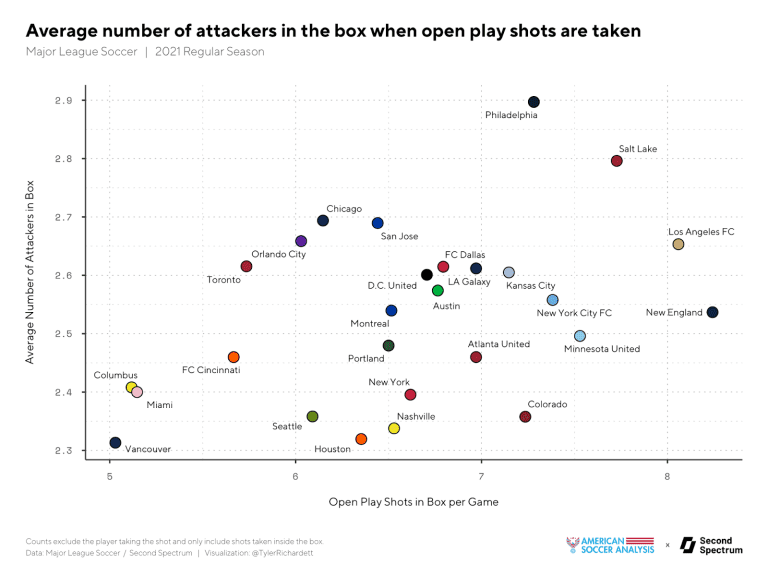
(Thanks to Tyler Richardett for pulling this data from Second Spectrum and making this viz).
They generate a bunch of open play shots, and an elite number of open play shots in the box. And on top of that, they are the second-best team in the league at getting multiple runners in the box, which explains why Damir Kreilach is always drifting unmarked to the back post.
“Flood the 18” is almost always a wonderful strategy, and as long as Pablo Mastroeni is the head coach, I think it’s going to be the defining characteristic of RSL’s attacking play.
They do need to work on the structure of everything before that, of course – no playoff team conceded more goals. Hell, only four teams of any stripe conceded more goals last year, and by the end of the season, it wasn’t even clear what RSL’s best shape was.
But they were always dangerous in the final third. Always.
My Worry
My worry is twofold. First is that they just never really figure out that structure issue, and thus never quite manage the risk/reward balance like the best teams do. RSL had a tendency to go full-throttle in attack, to the point that they constantly left themselves wide open in transition, and that explains a lot of those 54 goals conceded.
Second is the talent issue. There are a number of pretty good players on this roster and, in Kreilach, one truly great one. And there’s a new ownership group in town, one that I think will be ambitious in adding DPs and U22 Initiative signings to the group.
But the season starts in two days and there are no DPs yet, and no U22s. That means they have a chance to add as many as six brand new, high-level players. And that they haven’t.
Points in March count as much as points in October. Clock’s ticking.
First-Choice XI
4-2-3-1: Ochoa; Brody, Silva, Glad, Herrera; Luiz, Ruiz; Cordova, Kreilach, Menendez; Wood
It is truly a new era in Frisco. Forget the $20 million sale of Ricardo Pepi, or the trade of Ryan Hollingshead and his 222 career games for this club. What really makes 2022 different is that, for the first time since the 2013 season, they went outside the family, so to speak, to find a new head coach.
Said new head coach is Nico Estevez, a 42-year-old Spaniard who’s spent most of his career managing at various levels with Valencia, but has spent the past five years as an assistant to Gregg Berhalter, first with Columbus and then with the US men’s national team.
Based upon that, and upon what we’ve seen in preseason, here is what I expect: a possession-heavy 4-3-3 with strong positional play principles.
Jesus Ferreira will be a false 9, and both wingers – Paul Arriola on the right, and eventually Alan Velasco on the left – will be expected to score something close to double-digit goals. They will build from the back, the kids will continue to be promoted up the chain as rapidly as their skill allows, and some of them might even get the chance to have the whole thing built around them:
I think there are a lot of USMNT and El Tri fans who’ll be watching this team every week.
My Worry
I’ve just never really bought Ferreira as any kind of center forward. To me he’s always looked better as a shadow striker in a 4-4-1-1, and his numbers/form last year playing that position kind of backs that up.
Still, though, the attack should be functional at the very least. The real worries with Dallas are injuries (Paxton Pomykal and Matt Hedges being the two most obvious to fret about), a backline that broke down and shipped the third-most goals in the league in 2021, and a lack of ball security and ball-winning at defensive midfield. From a certain point of view you could say that it’s not Pomykal or Ferreira, but Edwin Cerrillo who’ll be the most important of the Homegrowns this season. And that is… concerning.
A lot of things have to go right for Dallas to push back above the line this year. A whole lot.
First-Choice XI
4-3-3: Maurer; Farfan, Hedges, Tafari, Twumasi; Pomykal, Cerrillo, Servania; Velasco, Ferreira, Arriola
Austin have a few things going for them:
- They did their offseason shopping in the middle of last season, which should cut down on integration time.
- They were much better in attack once Sebastian Driussi and Moussa Djitte arrived.
- They targeted their two areas of obvious need (d-mid and center back) this window.
- Josh Wolff has a very obvious system of play, which gives the team an identity.
I’ve written elsewhere this offseason that I think Austin’s front office was clear-eyed in its approach to fixing the roster, and if the guys they brought in are as competent as their resumes suggest, then they will have gone a long way toward curing the ills that ailed this group in its expansion season. That really does seem to bode well for year-over-year improvement.
The other thing I really like here is that the roster is pretty well-balanced. In theory, they now have depth at spots where they were thin last year, and nobody’s going to be asked to play out of position, or to provide an impact that’s just beyond them. It all makes more sense than it did in 2021.
Driussi, by the way, is low-key a Best XI candidate.
My Worry
What if Jhojan Valencia isn’t that good? Or good at all? What if none of the center backs on the roster are actually MLS-caliber starters – a very, very real possibility with this group. And what if Djitte really is just a statue in the 18? He can help all he wants in build-up play, but if he’s only going to score a goal every 600 minutes, he will not (and should not) start.
Plus Brad Stuver regressed hard in the second half of the year. He doesn’t need to be what he was in the first half of 2021 when he was absolutely incredible, but he’s got to get back to league average for this team to have any kind of a shot at the postseason.
First-Choice XI
4-2-3-1: Stuver; Kolmanic, Gabrielsen, Romana, Lima; Ring, Valencia; Dominguez, Driussi, Fagundez; Djitte
Remember Portland’s run to an appearance in the 2018 MLS Cup, or their MLS is Back Tournament title? Know what those two events had in common for the Timbers?
Jeremy Ebobisse was the starting No. 9 for both. He was really good – I wrote a million times that I was flummoxed by Portland’s insistence upon paying millions of dollars for inferior players to start over him – and very productive, posting about 0.5 xG/90 whenever he played as a center forward, with boxscore production to match.
And now Jebo’s in San Jose, entering a season as a starting center forward for the first time. If he matches his career per-90 numbers this season and stays healthy, he should score 15ish goals. And beyond that, this is the best-constructed Quakes’ roster I’ve seen in… ever, maybe? Look at how clear, functional and, in certain spots, potentially spectacular this group is:
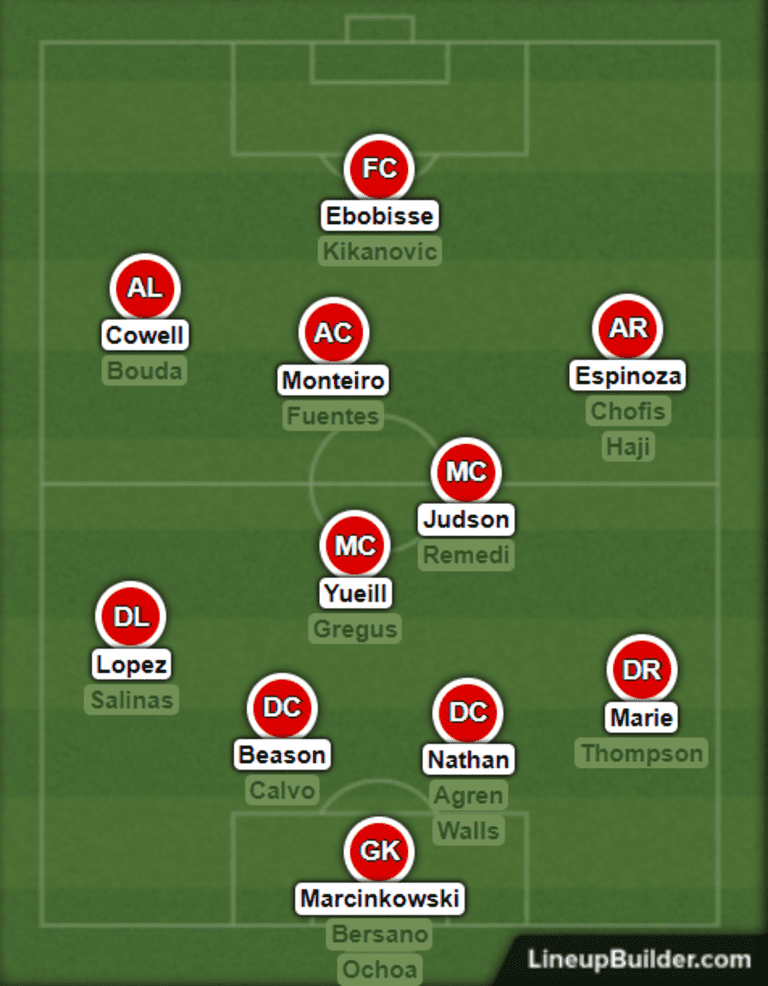
They still need to add depth in a few spots, and obviously a lot of the upside here is projection given the team’s relative youth.
But just roll this bunch out in a 4-2-3-1 with clear pressing triggers and zonal defensive responsibilities and it should work really, really well.
My Worry
The Quakes have been playing a 3-6-1 with Jackson Yueill at center back, Cade Cowell and Cristian Espinoza as wingbacks, Francisco Calvo starting, and man-marking defensive principles throughout preseason.
It’s been three years of galaxy-brained stuff, and a lot of it has been entertaining. But I don’t blame Quakes fans for wanting to get off of Mr. Almeyda’s Wild Ride.
First-Choice XI
3-6-1: Marcinkowski; Calvo, Yueill, Nathan; Cowell, Remedi, Gregus, Espinoza; Monteiro, Chofis; Ebobisse
United sold two starters this offseason and are working on sending off another, one to Wolfsburg for a club-record transfer fee; one to FC Dallas for a league-record GAM haul; and one to FC Cincinnati for more GAM than I think anyone expected they could get for him if the deal gets finalized (no offense, Junior Moreno).
That is good work. They also spent a bit of that GAM haul by acquiring a new left wingback who is MLS-proven and in his prime, and splurged on an attacking midfielder/second forward who will be arriving in July, while taking on a new center forward who’s already in town on loan, and is happily heading home preseason goals (and might head home a dozen just off of service from Julian Gressel this year).
Edison Flores is healthy and scoring huge goals for Peru. Moses Nyeman is clearly being counted upon to step into the starting XI, just as Kevin Paredes was last year. The defense is deeper, and hopefully healthier, and it doesn’t seem stupid to think that Kimarni Smith or Griffin Yow can provide a little bit of something in the attack this year.
All this comes within the context of the team having bought in and maxed out their effort for Hernan Losada last year. Why can’t there be growth in Year 2?
My Worry
So in a lot of ways, it seems like D.C. are trying to walk the same path that the Union have been walking during the Jim Curtin era, counting on both chemistry and internal development to spur a steady climb up the standings.
The thing is, though, it usually doesn’t work like that. The Union are remarkable for their linear growth and ability to develop talent from within. Other teams that have tried the same – RSL and Dallas come to mind – have yo-yo’d up and down the standings.
There are two other major concerns here, too. One is that while D.C. made some signings this winter, they don’t really seem like upgrades over the guys who were there last year, more just plugging holes with similar guys. And that’s not great for a team that missed the playoffs in 2021.
The other is that D.C. were a max effort team last season. If they can’t replicate that in 2022, then they’re in some pretty big trouble.
First-Choice XI
3-4-2-1: Hamid; Hines-Ike, Birnbaum, Najar; B. Smith, Canouse, Nyeman, Gressel; Flores, Djeffal; Estrada
Houston are… less different than I suspected they would be. And maybe that’s not a bad thing, right? Steve Clark, Tim Parker, Memo Rodriguez, Fafa Picault and Corey Baird have all been above-average players in this league before. I still think Matias Vera has got unexplored talent, and I love what I’ve seen from Coca Carrasquilla.
Keeping Darwin Quintero around as an attacking super-sub has Ilsinho potential, and they addressed a clear need at center forward via both the SuperDraft and a club-record DP signing. They also seem to have a bit of fullback depth and winger depth.
In a way, I am a fan of this approach. I think that too often new regimes come in and just want to go full blank slate instead of actually assessing the talent on hand, and figuring out how to get more out of it – how to build upon it. It seems like that’s what Pat Onstad and Paulo Nagamura are doing here, and I don’t hate it at all.
And, of course, if they can add Hector Herrera to this mix, it should all end up working even better, shouldn’t it?
My Worry
There’s still probably not enough talent in the room. The Dynamo didn’t just miss the playoffs last year; they were dead last in the West with only 30 points and a -18 point differential. Is a new coach, a new striker and a new goalkeeper enough to spur a 66% improvement, which is what they’d need to hit in order to push into the playoff race?
It feels really, really doubtful. Even if they get HH, it’s probably not enough.
First-Choice XI
4-3-3: Clark; Zeca, Hadebe, Parker, Dorsey; Memo, Vera, Carrasquilla; Picault, Ferreira, Baird
Chris Henderson took the opposite approach from Onstad and the Dynamo, sweeping out damn near all of the previous regime’s signings:

This is the first season of what is clearly going to be a multi-year team makeover. Gone are two DPs (though Blaise Matuidi is officially still on the roster for now), and another DP (Rodolfo Pizarro) is also gone, which is how they got into this mess in the first place. But ok you already knew all that, so let’s move on.
What’s left is Gonzalo Higuain, who was excellent as a playmaker and decent as a goalscorer, and a defensive non-entity to an almost comedic extent. And Gregore’s still around at d-mid, and beyond that, almost everything else is new.
And why not? Miami’s been a memorably awful team through two years of existence, so it was already time for a reboot and rebuild. Maybe in the process, they’ll discover some young talent that was previously overlooked or almost discarded who can actually be a foundational piece of what’s next (keep an eye on Aime Mabika, is what I’m saying).
My Worry
This team isn’t good enough at the top end, isn’t really deep enough and the pieces don’t seem to fit all that well unless Jean Mota can come in and, alongside Gregore, just dominate central midfield game after game.
So yeah, it’s a rebuilding year. Hope that the Brazilians are really good in central midfield, that Mabika, Jairo Quinteros and Ryan Sailor all show potential at center back and that one of the young-ish attacking options pops. But it feels way too optimistic to hope for much beyond that.
First-Choice XI
5-3-2: Marsman; Gibbs, Quinteros, Lowe, Mabika, Yedlin; Mota, Gregore, Ulloa; Higuain, Campana
One of the defining features of this team over its first three years of existence was historically poor goalkeeper play, so the first thing new GM Chris Albright set about doing was fixing that. And in signing free agent Alec Kann, and then drafting Generation adidas kid Roman Celentano second overall, the hope is clearly that no one in Cincinnati will have to worry about goalkeeper being an issue until, like, 2035 or so.
It’s a huge, massive upgrade. Off the bat it should make Cincy about eight points better.
The bad news, of course, is that eight points better than last year would still have gotten Cincy their third straight Wooden Spoon, and a 28-point performance this year would certainly have them in contention for a fourth straight.
And really, for a team that’s in such a deep hole, there just wasn’t much roster movement this offseason. They did offer to ship out $425k GAM for Junior Moreno, who, if accepted by D.C., is probably penciled in as the starting d-mid, and they signed a couple of rotation pieces in free agency, but other than that… nada.
The wager, it appears, is that new head coach Pat Noonan will be able to coax improvement from within. Much of the roster is very young, so that is at least plausible.
My Worry
I think a lot of these players have actual talent, but I could very well be wrong. I think Noonan’s got the makings of a good head coach, but that could be wrong as well. I think the defense should improve and I know that the goalkeeping should improve – if I’m wrong about that last bit, Cincy might finish the year with zero points – but I don’t necessarily think that’s going to be enough to seriously move the needle.
But the biggest thing is this: None of the guys on the midfield depth chart, save for Lucho Acosta, have been even average MLS players over the past three years. For most of them, you’d have to stretch to even consider them just below average.
That spells trouble.
First-Choice XI
4-4-2 diamond: Kann; Matarrita, Vallecilla, Cameron, Powell; Kubo, Moreno, Acosta, Cruz; Brenner, Vazquez
I really liked the American Soccer Analysis preview of Charlotte FC (I mean, to be fair, I like all their previews – they do a great job, and have done for years), in which they make a pretty compelling case that Charlotte have gone all-in on an “auteur theory” coach in Miguel Angel Ramirez, and that part and parcel of going in on a coach like that is… patience. You have to be willing to ride out the inevitable slow start in order to get to the high points that you envisioned in the first place when you made the hire.
Let me give you two examples, one that worked, and one that’s in progress:
• Dome Torrent was an auteur coach for NYCFC. When he took over for Patrick Vieira, he didn’t say “I’ve got a 65-point team here; let’s just tweak one or two little things and try to get hot for the playoffs.” Instead, Dome did his best to unravel Vieira-ball almost immediately, spending the second half of the 2018 season instilling his own preferred principles of play and seeing results suffer because of it. The fans were understandably unhappy.
But then 2019 came, bringing with it some roster tweaks, and suddenly NYCFC were one of the best teams in the league, imposing their will upon the game week after week. It didn't end in the way the Pigeons wanted it to end, and it wasn’t massively different from what Vieira had done. But it was different, and it did work. It just took time to get there.
• Josh Woff is, I think, something of an auteur coach in the making with Austin. He has a clear vision of how he wants his team to play (it’s similar to Ramirez’s), and while chunks of it worked last year, huge chunks of it didn’t work. Huge, gaping chunks through which opponents were able to counterattack el Verde all season long.
Wolff is back in Year 2, after an offseason during which the front office made personnel moves designed to plug those counterattacking gaps, as well as maybe highlight some of Austin’s individual talent a little more than the overall system. Yet the system remains in place.
We’ll see if that patience pays off.
Anyway, I think Charlotte are somewhere on that spectrum with Ramirez.
My Worry
Will the front office have the patience to see it through with their coach? And will the coach have the patience to work with his players that he, uh, doesn’t really seem to rate?
I don’t think this is anything near as bad as FC Cincinnati’s original build, but there are some obvious holes in the roster, some very worrying preseason results and a bizarre amount of front-office turnover already.
Things are probably going to be very rough at the start. Do they have the patience and vision to see that through?
First-Choice XI
4-3-3: Kahlina; Fuchs, Corujo, Walkes, Lindsey; Hegardt, Alcivar, Franco; Reyna, Swiderski, Ortiz

